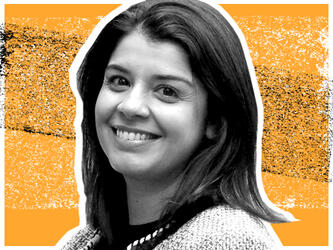Hail to the chief (researcher)
UK— The tickertape in Washington is starting to settle after Barack Obama’s inauguration as the 44th US president yesterday. But as the world waits for his impact on the global stage, Research looks back at some of the research methods he used to win the race to the White House.
Throughout his campaign, Obama and his team used opinion polls and focus groups as a key weapon, helping them identify their goals, look for weak points in the opposition and ultimately defeat all challengers – whether that was Democratic rival Hillary Clinton or Republican nominee John McCain.
In this exclusive interview, James Morris, research director at research and strategy agency Brand Democracy, highlights some of the key issues Obama and his team faced and how research helped them overcome them.
So how did research….
…identify the real McCain?
The attack they ran on John McCain was that he was the same as George Bush, he had voted for Bush 90% of the time and if you vote for McCain ‘you get more of the same'. Everyone inside Washington thought this was implausible because McCain actually had been notorious for disagreeing with Bush and had a reputation as a maverick.
What Barack Obama’s team did – and this is the first lesson for research – was they ignored what Washington insiders thought and went out around the country and found that the public’s image of John McCain was totally different from the insiders’ version.
What they learnt from that was the importance of questioning everything and never relying on received wisdom to find out what is going on – always go and find out for yourself.
…gauge the nation’s mood?
Another lesson was the importance of qualitative research. Hillary Clinton’s campaign largely ran quantitative research and her pollster saw focus groups as kind of pointless.
One of the results of this was that they missed the national mood, which was one of wanting change, whereas Clinton ran a campaign based on her experience.
If you're running a poll all about experience, you will do well on experience, but it was easy to miss the fact that experience wasn't the key thing, change was – and that’s what the Obama campaign picked up from their qual.
…help Obama act quickly when needed?
Another very important thing was using overnight research when big issues erupted. During the campaign the financial crisis broke and John McCain announced he was going to cancel his campaign so he could go to Washington to broker a bill to solve it. He also wanted to cancel the presidential debate the following night.
Obama’s team went out right away and tested people’s responses to look at what people were saying immediately and to gain information into how the debate might play out. They found that the public thought McCain was trying to make a political manoeuvre rather than a genuine attempt to solve the financial crisis.
Knowing what people thought, Obama was able to say, “This a manoeuvre, I'm not suspending my campaign and we're going to have a debate tomorrow night.” McCain had to turn up and ended up looking weak – but it was only by doing that research really, really fast that they knew they could win.
You have to have the infrastructure in place that allows you to do high-quality research, literally overnight, and there will be more situations like this as news cycles become faster.
It doesn't happen often for individual companies but there are events like the ‘Shilpa Shetty Effect’ for Channel 4 or some of the food safety scares at Cadbury's, where you need to do the right thing and make sure you communicate that you're doing the right thing in a way that reassures your consumers.
If you don't have the time to give it a week because you're on the Today programme in the morning, you need to get out and find out whether what you're saying is having the effect that you want it to have on your audience.
…beat the race card?
Some of the race stuff is interesting. David Axelrod, his chief strategist, has remarked: “Barack was a couple of years out of the Illinois senate, a black guy named Barack Hussein Obama – you don't need to load the wagon with any more bricks than that.” He knew that those things had the potential to be strong negatives.
They ran focus groups and found, particularly among older, less educated white people, those were concerns that people were bringing up.
What Obama did about that was to make sure he stood in front of the Stars & Stripes almost every time he was photographed and he gave that speech about race that tackled the issue head on.
…help Obama go on the offensive?
There is a perceived wisdom in PR that to some extent responding to attacks can fan the flames and spin the story out over time, which is sometimes true, but equally, failing to respond can concede the territory to the opposition. What Barack Obama did was to respond immediately and aggressively, using research to understand the best way to respond so he did not end up having an argument about the issue the opponent wanted to argue about.
For example, he went on television and spoke about negotiations with Iran over pre-conditions and was attacked by Republicans for being soft on America’s enemies. He rebutted that immediately and changed the topic to whether the country needed change in foreign policy or not, which they knew would work from their previous research.
Author: James Verrinder

We hope you enjoyed this article.
Research Live is published by MRS.
The Market Research Society (MRS) exists to promote and protect the research sector, showcasing how research delivers impact for businesses and government.
Members of MRS enjoy many benefits including tailoured policy guidance, discounts on training and conferences, and access to member-only content.
For example, there's an archive of winning case studies from over a decade of MRS Awards.
Find out more about the benefits of joining MRS here.













0 Comments